
Roots
The whisper of history often finds its voice in the most unexpected places, sometimes even in the very strands that crown our heads. For centuries, across continents and cultures, hair has served as a silent, yet eloquent, chronicle of who we are, where we come from, and the beliefs that shape our world. It is a biological marvel, certainly, a testament to the intricate workings of the human body, but its meaning extends far beyond mere physiology. Hair is a living archive, a visible manifestation of identity, status, and spirit.
Consider the microscopic landscape of a single strand. It begins its life deep within the scalp, in a tiny organ known as the Hair Follicle. This intricate structure, nestled beneath the skin’s surface, acts as a biological factory, producing the keratinized protein that forms each individual hair. The shape of this follicle, whether round, oval, or flat, dictates the hair’s cross-sectional geometry, which in turn determines its curl pattern.
Round follicles tend to produce straight hair, oval ones create wavy or curly textures, and flatter, ribbon-like follicles give rise to the tight coils and kinks characteristic of many textured hair types. Melanin, the pigment responsible for hair color, is also produced within the follicle, adding another layer to hair’s unique blueprint.
Beyond its cellular composition, hair carries profound cultural weight. Ancient civilizations, for instance, understood hair as a powerful visual language. In ancient Egypt, elaborate wigs and carefully styled braids were not simply decorative; they were explicit markers of social standing, wealth, and even religious devotion. A pharaoh’s meticulously constructed wig conveyed divine authority, while the braided styles of noblewomen communicated their elevated position within society.
Similarly, various pre-colonial African societies utilized hairstyles as complex systems of communication, indicating age, marital status, tribal affiliation, social rank, and spiritual beliefs. The way one’s hair was shaped could signify mourning, celebration, or readiness for battle. This deep connection transformed hair from a biological outgrowth into a sacred symbol, a canvas upon which personal and collective stories were rendered.
Hair, a biological marvel, serves as a profound historical and cultural chronicle, communicating identity, status, and spirit across diverse societies.

The Hair Follicle and Its Stories
The journey of a hair strand, from its inception within the follicle to its eventual shedding, mirrors the cycles of life itself. Each follicle undergoes distinct phases ❉ the Anagen Phase, a period of active growth that can last for years; the Catagen Phase, a brief transitional period where growth ceases; and the Telogen Phase, a resting stage before the hair sheds to make way for new growth. Understanding these cycles provides a scientific grounding for hair care, but it also prompts reflection on the transient nature of existence and the constant renewal that defines us. The health of the follicle, influenced by genetics, nutrition, and environment, ultimately dictates the vitality of the hair it produces.
The diverse world of textured hair, with its coils, kinks, and waves, presents a spectrum of biological wonders. These varying patterns, far from being a singular category, possess unique structural characteristics. Coily hair, for instance, often has a higher density of disulfide bonds and a flatter cross-section, contributing to its distinct spring and volume. This biological uniqueness has often been mischaracterized or misunderstood, leading to societal biases that have, in turn, shaped perceptions of beauty and identity.

The Essential Lexicon of Textured Hair
To truly appreciate the nuances of textured hair, a precise vocabulary becomes indispensable. This lexicon moves beyond superficial descriptions, inviting a deeper, more scientific understanding of its properties and needs.
- Porosity ❉ This term describes hair’s ability to absorb and retain moisture, influenced by the cuticle’s openness. High porosity hair, with its raised cuticles, absorbs water quickly but loses it just as fast, while low porosity hair, with tightly sealed cuticles, resists moisture but retains it once absorbed.
- Density ❉ This refers to the number of individual hair strands on one’s scalp, impacting the perceived thickness and volume of the hair.
- Elasticity ❉ The hair’s capacity to stretch and return to its original length without breaking, a sign of healthy protein and moisture balance.
- Curl Pattern ❉ Often categorized using a numbering system (e.g. 3A, 4C), this describes the shape of the curl, from loose waves to tight coils, offering a guide for product selection and styling approaches.
These terms allow for a more informed conversation about hair, moving beyond generalized notions to a specific, caring dialogue about individual hair needs. They provide a framework for understanding hair’s foundational aspects, which then allows us to explore its broader societal connections.
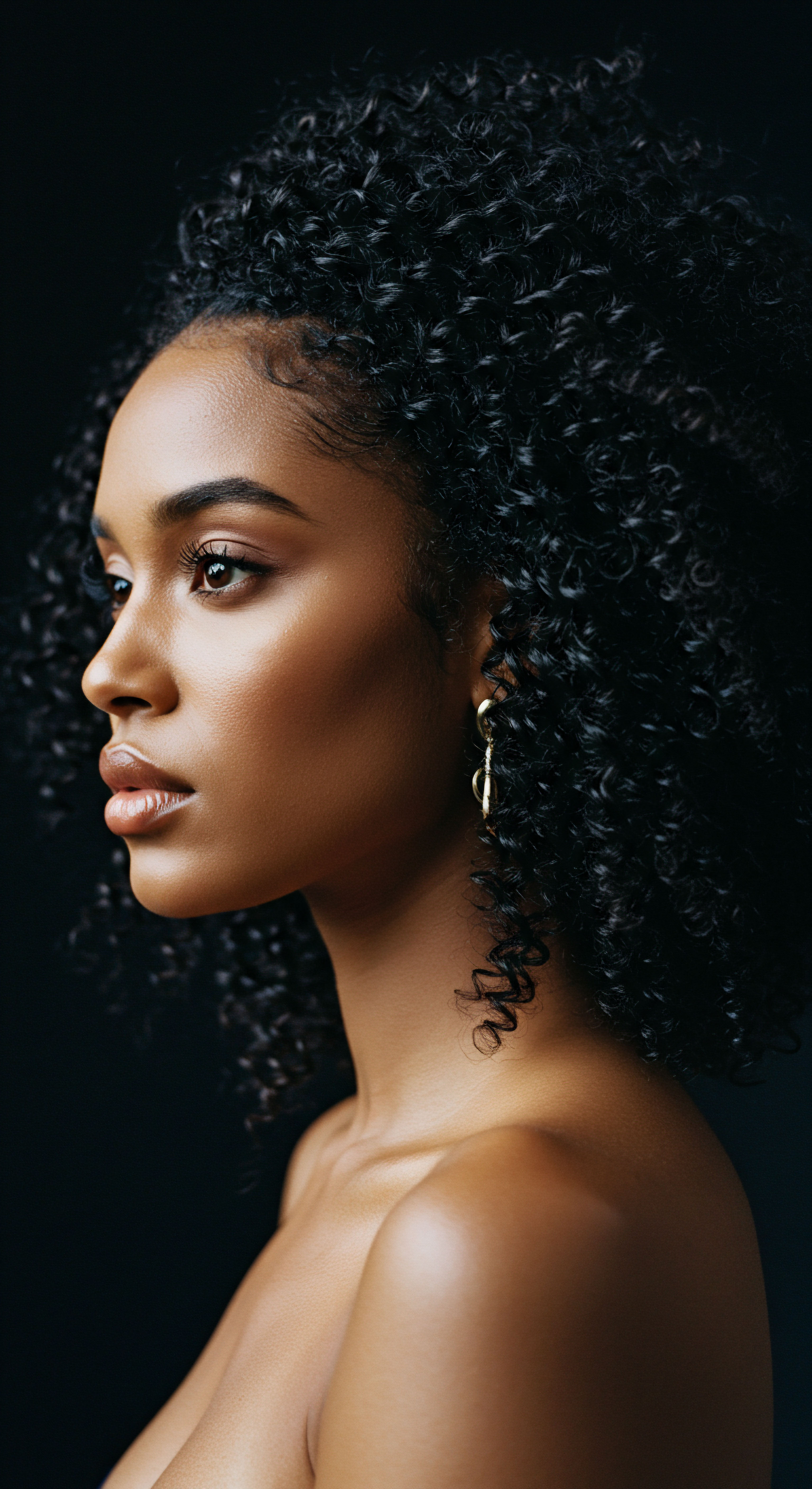
Ritual
As we step from the elemental understanding of hair’s biological blueprint, we enter the realm of daily practice, of hands moving with intention through strands, transforming, tending, and adorning. The connection between hair and identity finds its most tangible expression in these rituals, passed down through generations or newly discovered in moments of self-acquaintance. These are not merely acts of grooming; they are conversations with ourselves, our heritage, and the world around us.
For many, the morning ritual of preparing one’s hair sets the tone for the day, a quiet declaration of self. For those with textured hair, this ritual often involves a thoughtful sequence of cleansing, conditioning, and styling, each step a deliberate act of care. The tools we choose—a wide-tooth comb gliding through damp coils, a satin bonnet safeguarding delicate strands through the night—become extensions of this care, serving as instruments in a gentle dance of preservation and presentation.
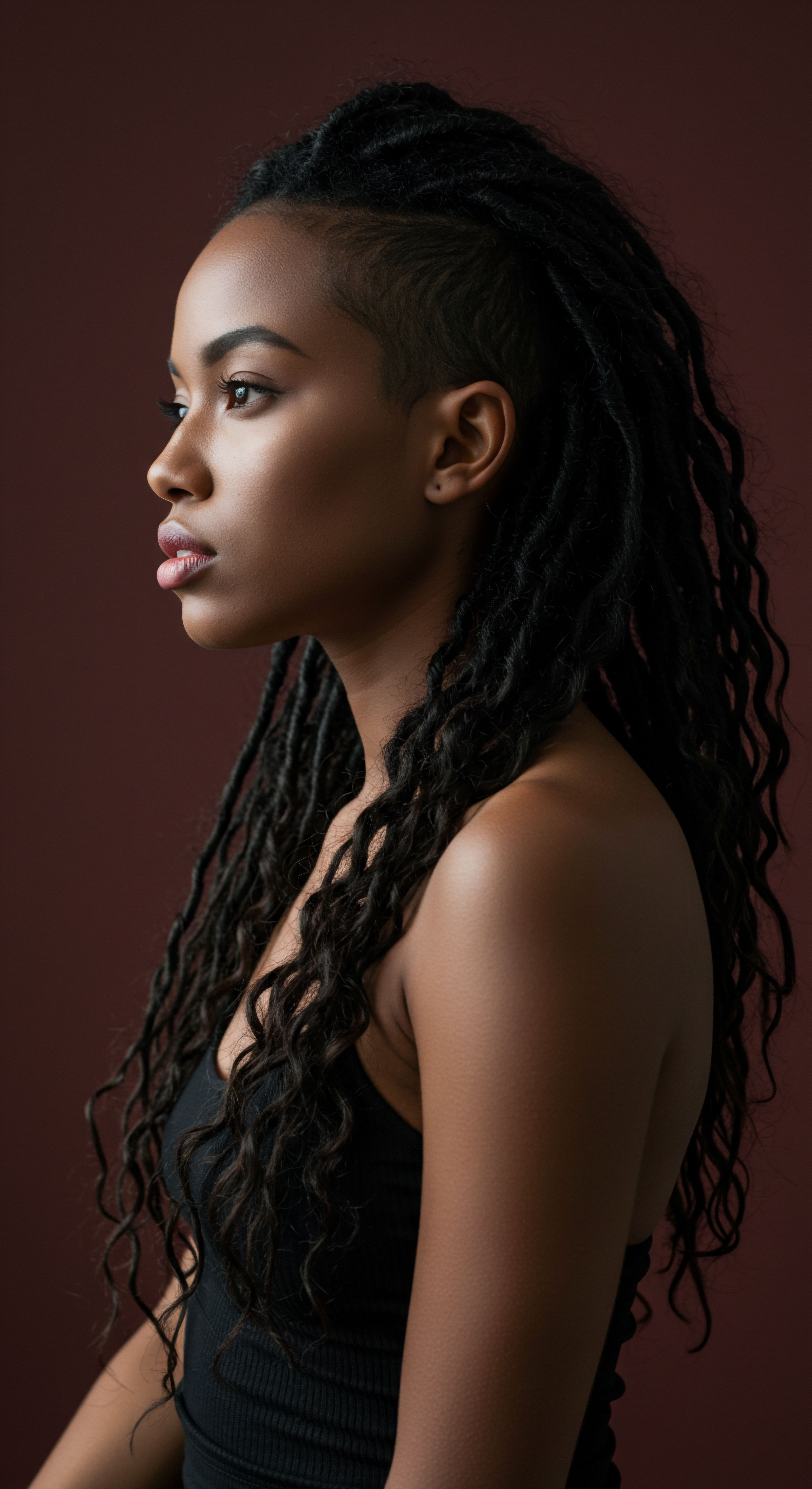
Styling as a Daily Affirmation
Styling hair, particularly textured hair, often extends beyond aesthetics; it serves as a powerful act of affirmation. Each twist, braid, or coil fashioned into place can represent a reclaiming of heritage, a celebration of unique beauty, or a quiet act of defiance against societal pressures. The choice to wear one’s hair in its natural state, free from chemical alteration or heat manipulation, can be a profound statement of self-acceptance.
Consider the historical depth embedded within many textured hair styling practices. Braiding Traditions, for instance, are far more than decorative. In many African cultures, specific braid patterns conveyed marital status, age, wealth, or even tribal affiliation. These intricate designs were not just art; they were living maps, genealogies, and social contracts woven into the hair.
The communal act of braiding, often performed by elders or skilled practitioners, served as a powerful social glue, strengthening community bonds and transmitting cultural knowledge across generations. The rhythmic pull and release of strands, the shared stories and laughter, all contributed to a deep, unspoken understanding of identity.
Daily hair rituals, from styling to protection, are acts of self-affirmation, reflecting heritage, cultural celebration, and a quiet defiance against societal pressures.
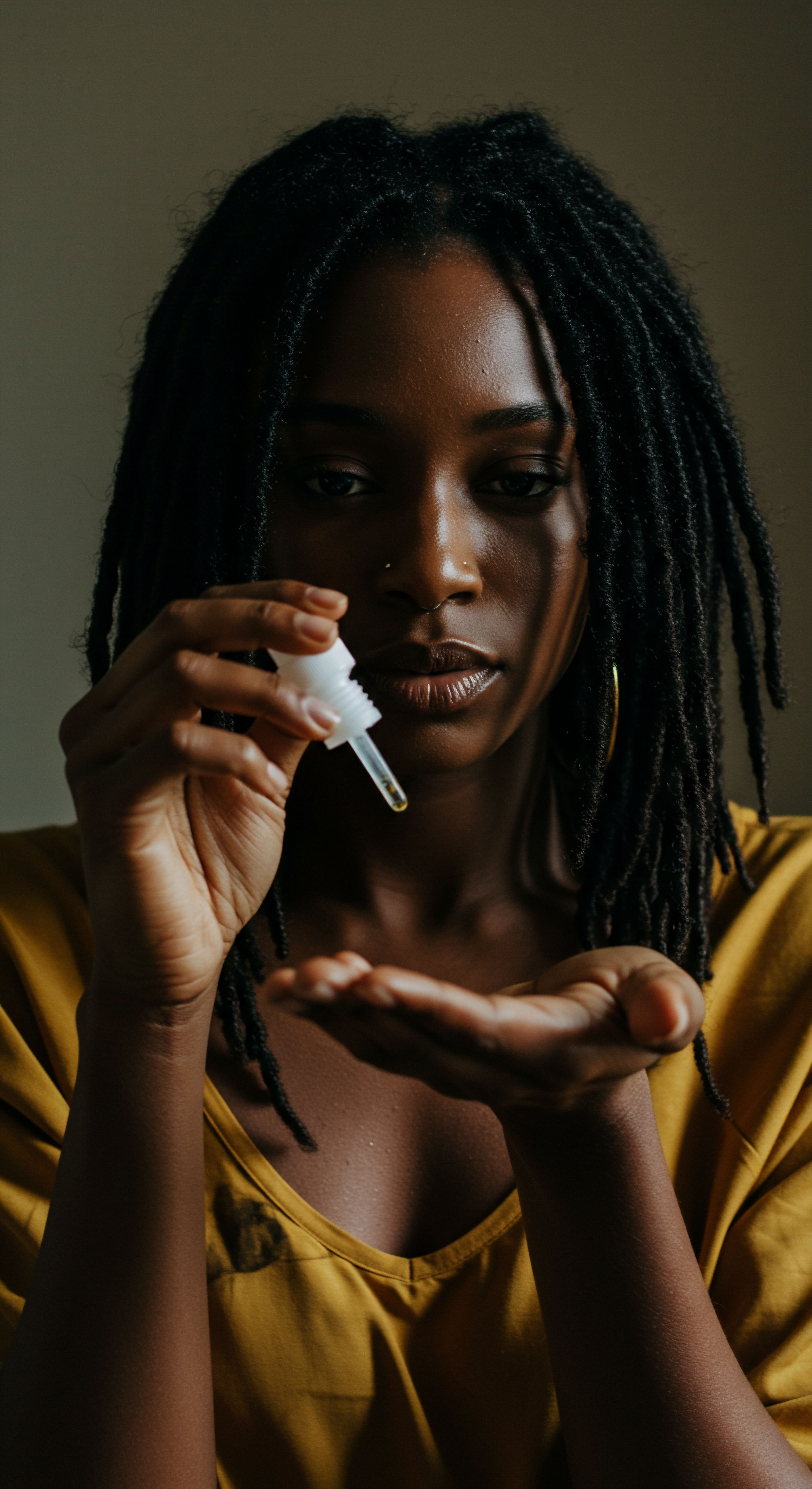
The Gentle Detangling Dance
The act of detangling, often a core component of textured hair care, also holds a ritualistic quality. It requires patience, a soft touch, and the right implements. A Wide-Tooth Comb or one’s own fingers become instruments of care, gently coaxing apart tangles rather than forcing them.
This mindful approach to detangling not only preserves the hair’s integrity, preventing breakage, but also offers a moment of quiet connection with one’s physical self. It can be a meditative practice, a pause in the day’s rush, dedicated to nurturing what grows from within.
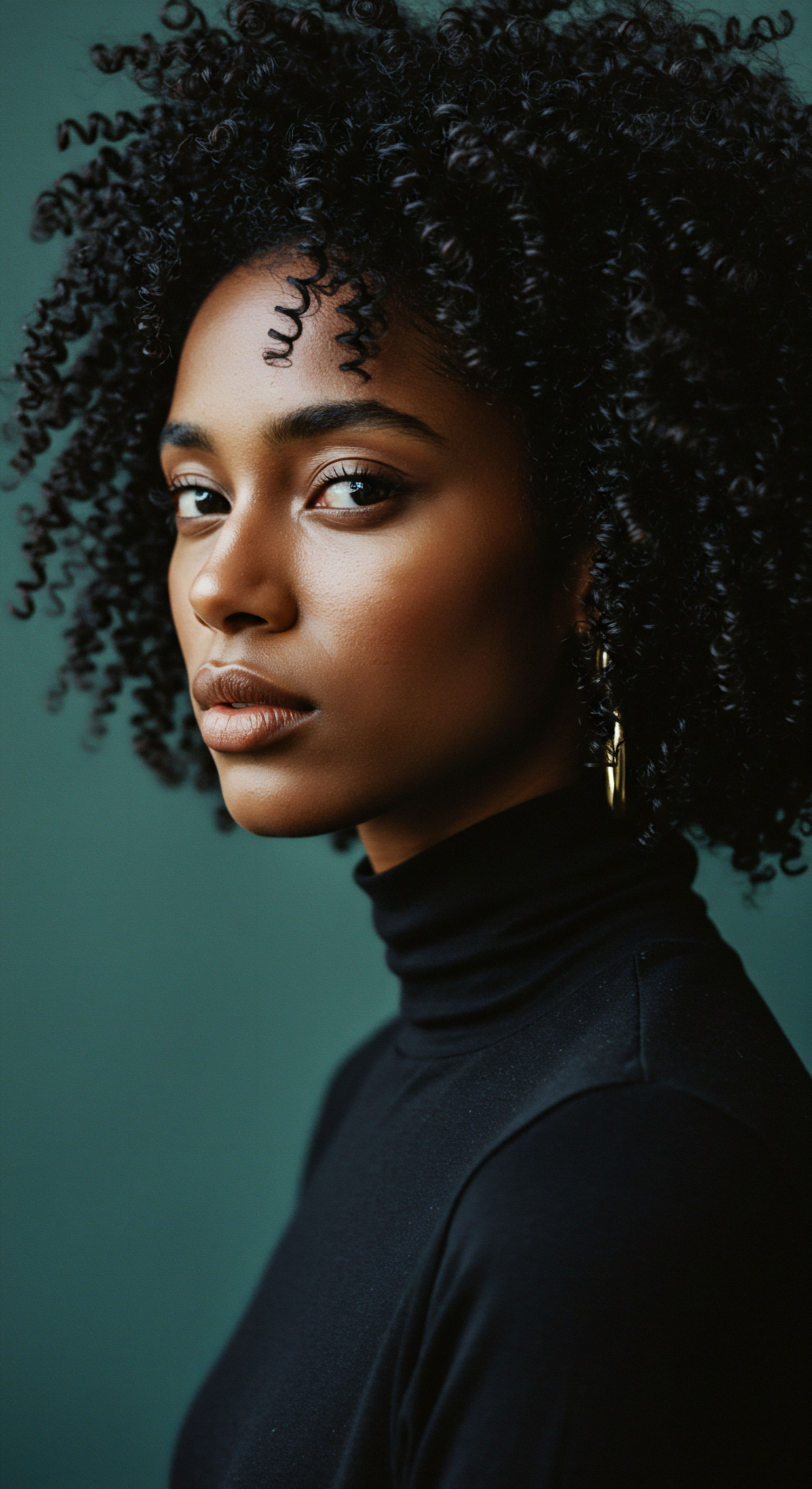
The Nighttime Sanctuary ❉ Bonnet Wisdom
The rituals extend into the night, where protective measures become paramount. The simple act of donning a Satin Bonnet or resting one’s head on a silk pillowcase transforms sleep into a sanctuary for textured hair. This seemingly small practice offers significant benefits, reducing friction, preventing moisture loss, and preserving delicate curl patterns. Historically, head coverings have served varied purposes, from modesty to protection from the elements.
For textured hair, the bonnet has become a modern symbol of proactive care, a practical wisdom passed among those who understand the particular needs of coils and kinks. It is a quiet ritual, yet it speaks volumes about a dedication to health and preservation, allowing hair to rest and renew, ready for the next day’s expression.
The tools we use, the techniques we employ, and the time we dedicate to our hair are all part of a larger conversation about self-worth and cultural connection. These practices are not static; they evolve, adapting to new knowledge and needs, yet they remain anchored in a timeless recognition of hair’s profound role in our lives.

Relay
The intricate dance between hair and identity stretches far beyond personal preference or cultural celebration; it plunges into the depths of societal structures, power dynamics, and the enduring echoes of history. To truly comprehend this connection, we must venture into the complex interplay of biological realities, psychological perceptions, and the profound social and cultural forces that have shaped, and continue to shape, the meaning of hair, particularly for those with textured strands. This journey reveals how hair can be a battleground, a symbol of resistance, and a powerful statement of self in the face of systemic pressures.

Historical Erasures and Reclamations
The Transatlantic Slave Trade represents a brutal historical rupture, not only in human lives but also in the cultural narratives tied to hair. Upon arrival, enslaved Africans often had their heads shaved, a deliberate act designed to strip them of their cultural identity, sever their connection to ancestral practices, and dehumanize them. This violent erasure sought to dismantle the complex systems of communication and status previously conveyed through elaborate hairstyles. The subsequent imposition of Eurocentric beauty standards created a pervasive “good hair” versus “bad hair” dichotomy, where straight, smooth hair was elevated as the ideal, while natural, textured hair was denigrated as unruly or unprofessional.
This historical imposition had lasting psychological consequences. Generations learned to associate self-worth with hair that conformed to dominant norms, leading to widespread adoption of chemical relaxers and heat styling, often at significant physical and emotional cost. The quest for “manageable” hair, driven by societal pressures, became a deeply ingrained practice for many Black women.
However, history also recounts acts of profound resistance. Consider the ingenious defiance of free Black women in 18th-century Louisiana. In 1786, Spanish Governor Esteban Rodríguez Miró enacted the Tignon Laws, which mandated that free women of color wear a tignon, a headscarf, in public. The intent was to distinguish them from white women, curtail their perceived beauty, and enforce social hierarchy.
Yet, these women transformed the decree into a powerful statement of resilience and artistry. They adorned their tignons with vibrant fabrics, jewels, and intricate knots, turning a symbol of oppression into a mark of distinction, wealth, and creativity. This act of subversion, reinterpreting the law without technically breaking it, stands as a testament to the enduring human spirit to reclaim identity even in the face of restrictive measures.
Hair, a potent symbol, reveals its complex relationship with identity through historical impositions and acts of profound cultural resistance.

The Natural Hair Movement and Its Social Footprint
The mid-20th century saw a resurgence of natural hair as a symbol of racial pride and political defiance, particularly during the Civil Rights Movement. The Afro became a powerful emblem of self-acceptance and a rejection of imposed beauty standards. This sentiment has continued to reverberate, leading to the contemporary Natural Hair Movement, which advocates for the acceptance and celebration of all textured hair types. This movement is not merely a trend; it is a profound cultural awakening with significant social and economic dimensions.
The economic impact alone is substantial. The natural hair movement has spurred the growth of a thriving industry, creating a market that caters specifically to the needs of textured hair. This has led to the rise of numerous Black-owned businesses specializing in natural hair products and services, contributing to economic empowerment within the community. According to a 2018 Mintel report, the Black hair care market was valued at an estimated $2.5 billion, a figure only expected to grow with the movement’s expansion.
Despite these strides, the journey remains fraught with challenges. Discrimination based on hair texture persists in schools and workplaces. Studies consistently reveal that Black women, particularly those with natural hairstyles, face bias in professional settings.
A 2020 study by Duke University’s Fuqua School of Business found that Black women with natural hairstyles were perceived as less professional and less likely to be recommended for job interviews compared to Black women with straightened hair or white women with any hair type. This bias is particularly pronounced in industries with conservative dress norms, such as consulting.
The implications extend beyond hiring. Black women with coily or textured hair are twice as likely to experience microaggressions at work compared to those with straighter hair. More than 20% of Black women aged 25-34 have been sent home from their jobs because of their hair.
This discriminatory landscape creates significant mental and emotional burdens. Research highlights the psychological consequences of hair-based stigma, including internalized racism, negative self-image, anxiety, chronic stress in professional spaces, and cultural disconnection.
The fight against hair discrimination has gained legislative momentum with initiatives like the CROWN Act (Creating a Respectful and Open World for Natural Hair), which seeks to prohibit discrimination based on hair texture and protective hairstyles. While several states have adopted this legislation, a federal ban continues to navigate the legal process. These legal efforts are crucial steps in addressing systemic biases that continue to affect educational and employment opportunities for individuals with textured hair.
| Hair Type of Black Women Natural Hairstyles (Afros, Braids, Twists) |
| Perception of Professionalism (Compared to Straightened Hair) Lower, |
| Likelihood of Job Interview Recommendation Less likely, |
| Hair Type of Black Women Straightened Hair |
| Perception of Professionalism (Compared to Straightened Hair) Higher, |
| Likelihood of Job Interview Recommendation More likely, |
| Hair Type of Black Women These findings, from a 2020 Duke University study, highlight a significant bias against natural hair in professional settings. |
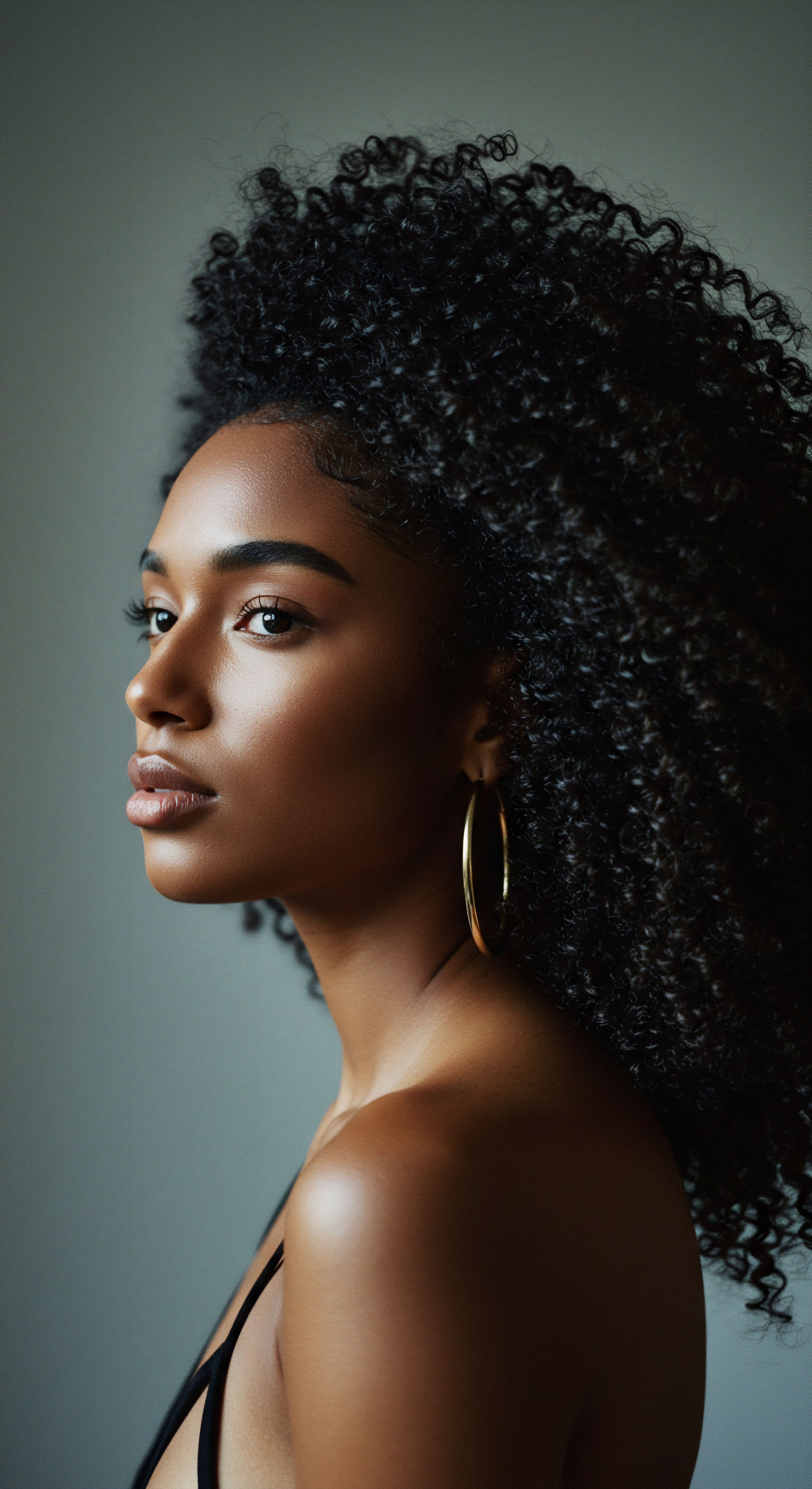
Hair as a Psychological Mirror
Beyond the societal and historical dimensions, hair holds a powerful psychological mirror to self-perception and mental well-being. For many, hair satisfaction is intrinsically linked to overall self-esteem and confidence. The pressure to conform to beauty standards, often internalized from a young age, can lead to significant emotional distress.
A study involving Black, white, and Latina adolescent girls found that hair was the only area of physical appearance satisfaction where racial differences emerged, with Black adolescent girls more likely to experience hair-related dissatisfaction and discrimination, leading to increased feelings of depression. This underscores the deep psychological impact of hair-based experiences.
The decision to alter one’s hair, whether through chemical processes or heat, can be a complex negotiation between personal desire, societal expectation, and cultural heritage. The mental and emotional toll of constantly managing hair to fit a narrow definition of “professional” or “beautiful” can be considerable, contributing to anxiety and chronic stress.
The natural hair movement, while a celebration of identity, also highlights persistent hair discrimination, impacting psychological well-being and economic opportunity.

The Interconnectedness of Hair, Identity, and Health
The relationship between hair and identity is not merely symbolic; it has tangible implications for physical and mental health. The use of chemical relaxers, driven by a desire for societal acceptance, has been linked to various health concerns, including scalp damage and potential increased risk of certain cancers. The daily stress of maintaining certain hairstyles, avoiding sweat, or carrying products to “control” one’s hair also contributes to a quiet, ongoing burden.
Conversely, embracing natural hair can lead to healthier hair and scalp, reducing exposure to harsh chemicals and heat. This choice can also lead to a deeper sense of authenticity and self-acceptance, fostering improved mental well-being. The movement towards natural hair is thus a holistic one, encompassing not only aesthetic preference but also physical health, psychological freedom, and cultural affirmation.
The ongoing conversation about hair and identity continues to shape policies, influence markets, and redefine beauty standards. It is a testament to the enduring power of hair as a personal statement, a cultural anchor, and a barometer of societal progress.
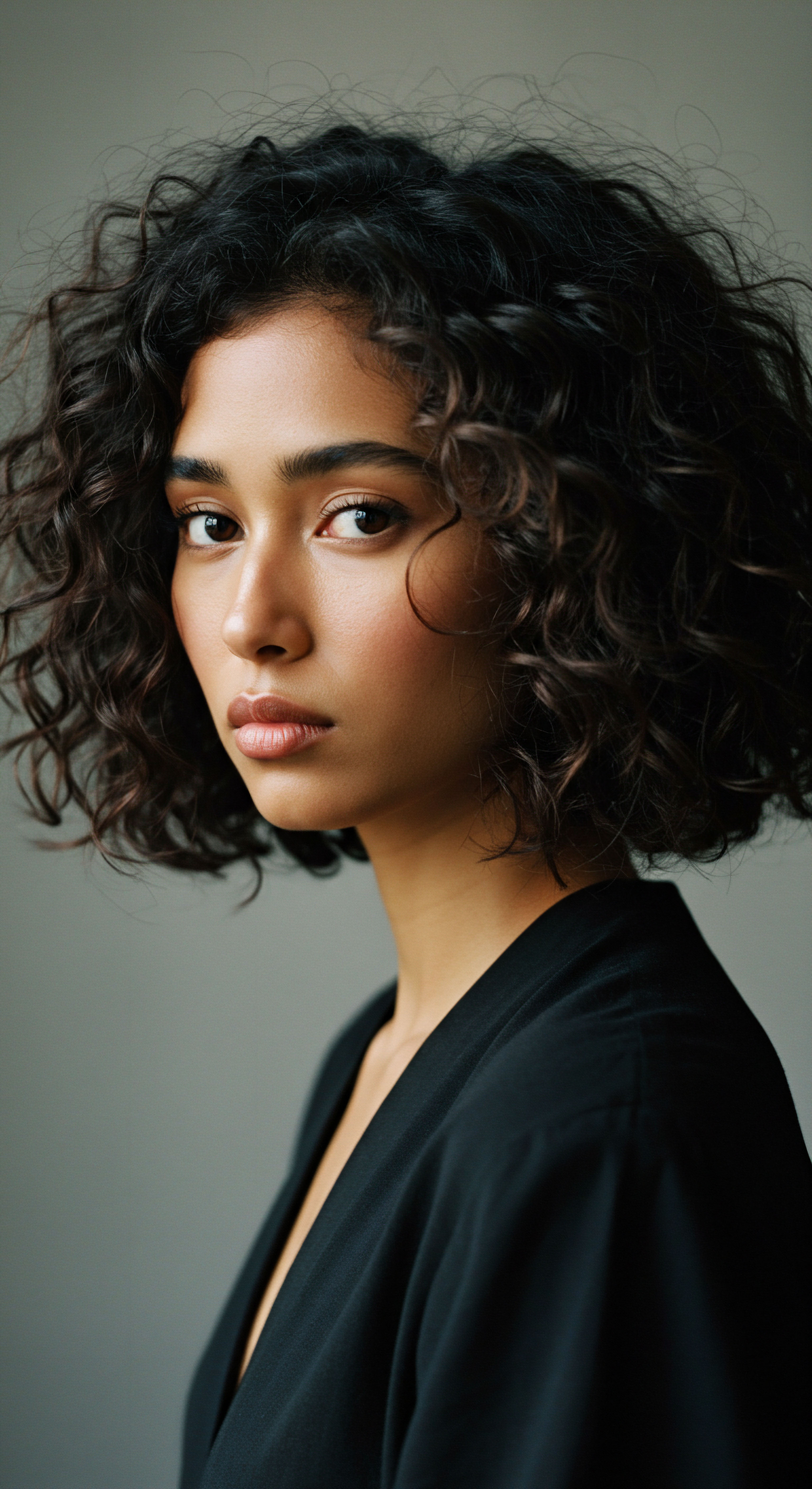
Reflection
As we gently pull back from the historical currents and contemporary complexities, a quiet understanding settles. Hair, in its myriad textures and forms, remains a profound declaration of self, a living testament to journeys both personal and collective. It holds within its strands not just biological information, but the whispers of ancestors, the resilience of communities, and the courage of individuals who dare to wear their authentic selves.
The story of hair and identity is an ongoing conversation, a soft unfolding of understanding that invites us all to look deeper, beyond surface appearances, to the rich narratives held within every coil, kink, and wave. This connection reminds us that true beauty lies in the freedom to be, unapologetically, ourselves.

References
- Byrd, Ayana D. and Lori L. Tharps. Hair Story ❉ Untangling the Roots of Black Hair in America. St. Martin’s Press, 2001.
- Gould, Virginia M. Afro-Creole ❉ The History and Legacy of Louisiana’s Free People of Color. Louisiana State University Press, 2017.
- Hichens, Joanne, and Karina Magdalena Szczurek, editors. Hair ❉ Weaving and Unpicking Stories of Identity. Modjaji Books, 2016.
- Koval, Christy Zhou, and Ashleigh Shelby Rosette. “The Natural Hair Bias in Job Recruitment.” Social Psychological and Personality Science, vol. 11, no. 8, 2020, pp. 1069-1077.
- LeJune, Keena. Don’t Touch My Hair ❉ Echoes of Resilience and Identity. Independently Published, 2023.
- Long, Carolyn. A New Orleans Voudou Priestess ❉ The Legend and Reality of Marie Laveau. University Press of Florida, 2006.
- Mbilishaka, Afiya. “The Politics of Black Hair.” Psychology Today, 12 Dec. 2023.
- Perception Institute. “The ‘Good Hair’ Study Results.” 2016.
- Weitz, Rose. Rapunzel’s Daughters ❉ What Women’s Hair Tells Us about Women’s Lives. Farrar, Straus and Giroux, 2004.
- Willett, Julie Ann. Permanent Waves ❉ The Making of the American Beauty Shop. New York University Press, 2000.